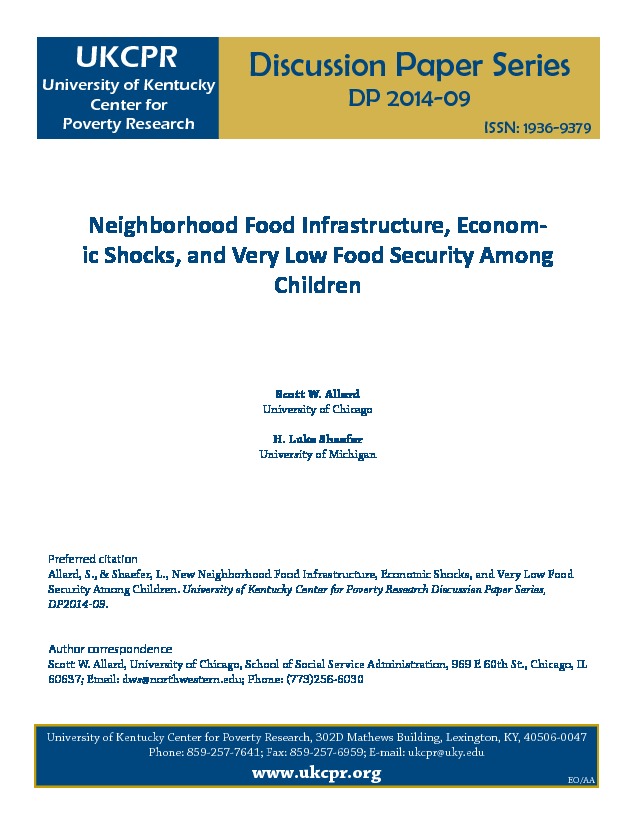Concern about spatial access to food retailers and food assistance resources has increased in recent years, placing greater importance on understanding how connections to the local food resource infrastructure shapes food security. This is especially true during the Great Recession era, during which time a greater incidence of economic shocks has contributed to rising food insecurity and rising food assistance caseloads. Using data from the Michigan Recession and Recovery Study (MRRS), a panel survey representative of working-age adults in the Detroit Metropolitan Area, this project explores two primary research questions related to food security of low-income households. First, how does access to the local food resource infrastructure relate to the risk of food insecurity? Second, to what extent is the experience of unemployment associated with increased risk of food insecurity? Across most measures, we find that many vulnerable population groups have greater or at least comparable spatial access to food resources as less vulnerable populations groups. We also find that in some instances closer proximity to SNAP-certified supermarkets or grocery stores is negatively associated with food security, meaning households that are closer to supermarkets and small grocery stores are more likely to report food insecurity, than those that are further away. Lower levels of education, experience of unemployment, and the experience of financial hardship over the last year also are broadly associated with greater risk of food insecurity.
Research
ChildrenPDF Thumbnail
